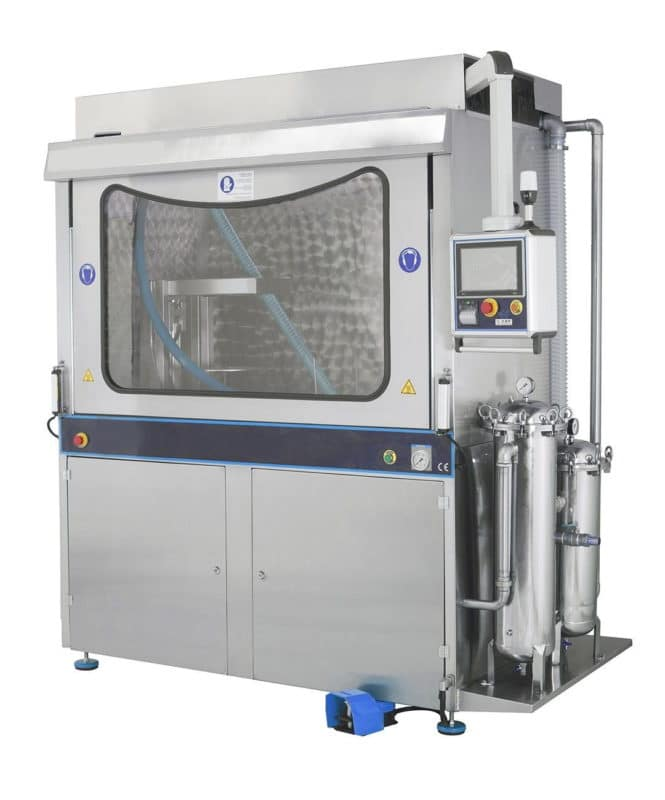Diesel Particulate Filters (DPFs) are integral components in the exhaust systems of modern diesel-powered vehicles, designed with a primary purpose: to mitigate the emission of harmful particulate matter into the atmosphere. As diesel engines operate, they produce a significant amount of soot, a fine particulate matter composed of carbon and other combustion byproducts.
The implementation of DPFs addresses the environmental challenges posed by these emissions, aligning with increasingly stringent emission standards worldwide.
The Filtration Process
DPFs employ a sophisticated filtration process to capture and store particulate matter generated during the combustion of diesel fuel. The heart of this process lies in the porous filter substrate, typically constructed from materials like cordierite or silicon carbide. As exhaust gases pass through the filter, soot particles become trapped, allowing only cleaned gases to exit the system.
The Regeneration Process
To maintain optimal performance, DPFs undergo a regeneration process. During passive regeneration, which occurs during normal driving conditions, accumulated soot is gradually burned off at elevated temperatures. Active regeneration, initiated by the engine control unit, involves the injection of additional fuel into the exhaust to raise temperatures and facilitate the combustion of collected soot.
Understanding the intricate functionality and components of a Diesel Particulate Filter is foundational to appreciating their role in emission control and the necessity of regular maintenance to ensure sustained performance. In the subsequent sections, we will delve into when and how to clean a DPF for optimum functionality and longevity.
Signs of a Clogged DPF
A Diesel Particulate Filter (DPF) that is clogged or malfunctioning can significantly impact the performance and efficiency of a diesel engine. Being able to recognize the signs of a clogged DPF is crucial for maintenance and to avoid more severe issues down the line. Below are key indicators that suggest a DPF might be clogged or in need of attention:
Reduced Engine Performance
- Loss of Power:One of the most noticeable signs of a clogged DPF is a reduction in the vehicle’s power and acceleration. This happens because the exhaust system is blocked, restricting the engine’s ability to expel gases effectively.
- Sluggish Response:The vehicle may feel less responsive, particularly under heavy loads or during acceleration, due to the reduced efficiency of the exhaust system.
Increased Fuel Consumption
When a DPF is clogged, the engine must work harder, leading to a noticeable increase in fuel consumption. This inefficiency arises because the engine struggles to draw in fresh air for combustion, affecting its overall performance.
Warning Lights on the Dashboard
Modern vehicles are equipped with sensors that monitor the DPF’s performance. When these sensors detect a blockage, they typically trigger a warning light on the dashboard, often the “check engine” or a specific DPF light.
Difficulty in Starting the Engine
In severe cases, a clogged DPF can lead to difficulties in starting the engine as the blocked exhaust restricts the expulsion of gases, creating back pressure that interferes with engine operation.
Unusual Smells or Sounds
A clogged DPF can cause a noticeable change in the exhaust’s smell, often resulting in a sulfurous or acrid odor. Additionally, the vehicle might emit unusual sounds from the exhaust system due to increased pressure and strain.
Excessive Exhaust Smoke
An increase in visible smoke from the exhaust can be a sign of a DPF problem. The smoke may appear darker and more pronounced, indicating incomplete combustion and accumulation of particulate matter.
Increased Emissions
Vehicles with a clogged DPF often fail emissions tests due to the high level of particulate matter and other pollutants being emitted.
Automatic Regeneration Frequency
Many modern diesel vehicles are designed to automatically regenerate the DPF at regular intervals. If you notice that your vehicle is entering this cycle more frequently, it could be a sign that the DPF is becoming increasingly clogged.
Preparing for DPF Cleaning
Proper preparation is essential before initiating the process of a Diesel Particulate Filter (DPF) cleaning. This involves gathering the necessary tools and materials, ensuring safety measures are in place, and conducting pre-cleaning checks to assess the condition of the DPF.
Necessary Tools and Materials
- Socket Set:Various socket sizes for removing bolts securing the DPF in place.
- Wrenches:Open-end or adjustable wrenches for tasks like loosening clamps and fittings.
- Screwdrivers:Flathead and Phillips-head screwdrivers for removing screws or other fasteners.
- Cleaning Agent:DPF-specific cleaning solution or cleaner recommended by the vehicle manufacturer.
- Soft Bristle Brush:Used for gently scrubbing off loose soot and debris from the DPF.
- Bucket:For mixing cleaning solution and holding removed components during the cleaning process.
- Safety Equipment:
Gloves: Chemical-resistant gloves to protect hands from cleaning agents.
Goggles: Eye protection to prevent contact with cleaning solutions.
- Drip Pan: To collect any runoff during the cleaning process.
- Compressed Air Source: Optional but beneficial for removing loose soot and debris from the DPF before cleaning.
- Shop Towels or Rags: For wiping and cleaning various components during the process.
- Diagnostic Tool:If available, a diagnostic tool to reset the DPF regeneration counter after cleaning.
Pre-Cleaning Checks
Inspecting the DPF for Physical Damage
- Cracks or Holes:Thoroughly examine the DPF for any visible cracks or holes. Damaged DPFs may require replacement rather than cleaning.
- Loose Connections: Check for any loose connections, clamps, or fittings that could affect the DPF’s sealing integrity.
Assessing Cleaning Sufficiency or Replacement Necessity
- Soot Accumulation:Evaluate the amount of soot accumulated in the DPF. If the soot buildup is within the acceptable range, cleaning may be sufficient. However, extensive and stubborn buildup may indicate the need for replacement.
- Catalyst Condition:If the DPF has a catalyzed coating, assess its condition. A damaged or deteriorated catalyst may require replacement.
- Manufacturer Guidelines: Refer to the manufacturer’s guidelines to determine if the accumulated soot level is within the recommended limits for cleaning or if replacement is advised.
By ensuring you have the necessary tools and safety equipment, as well as conducting thorough pre-cleaning checks, you set the stage for a successful and effective DPF cleaning process.
Cleaning Methods for DPFs
Properly cleaning a Diesel Particulate Filter (DPF) is crucial for maintaining optimal performance and ensuring compliance with emission standards. Various cleaning methods are available, each with its own set of advantages and considerations. In this section, we will explore three main cleaning methods: Manual Cleaning, Chemical Cleaning, and Professional Cleaning Services.
Manual Cleaning Process
Step-by-step guide to manually cleaning a DPF:
Ensure Safety Precautions:
- Wear appropriate safety gear, including gloves and goggles, to protect against cleaning agents.
- Work in a well-ventilated area or use a fume extraction system.
Remove the DPF:
- Safely detach the DPF from the exhaust system according to the manufacturer’s guidelines.
- Use a socket set and wrenches to loosen bolts and clamps securing the DPF.
Inspect for Damage:
- Conduct a visual inspection for cracks, holes, or other physical damage.
- Check the catalyst coating if applicable.
Pre-Cleaning with Compressed Air:
- If available, use compressed air to remove loose soot and debris from the DPF.
- Hold the DPF in a secure position to prevent damage during air blowing.
Soak in Cleaning Solution:
- Prepare a cleaning solution following the manufacturer’s recommendations.
- Soak the DPF in the solution to help break down and loosen accumulated soot.
Brush and Scrub:
- Gently scrub the DPF with a soft bristle brush to remove stubborn soot.
- Pay attention to the filter substrate and catalyst coating (if present).
Rinse and Dry:
- Thoroughly rinse the DPF with water to remove cleaning solution residues.
- Allow the DPF to dry completely before reinstalling.
Reinstall the DPF:
- Securely reinstall the DPF according to manufacturer guidelines.
- Tighten bolts and clamps to the specified torque.
Tips for effective soot removal:
- Use a non-abrasive brush to avoid damaging the filter substrate.
- Allow sufficient soaking time in the cleaning solution for optimal effectiveness.
- Ensure the DPF is completely dry before reinstallation.
Chemical Cleaning
Types of chemical cleaners and their application:
Oxidizing Agents:
- Chemicals containing oxidizing agents like cerium oxide.
- Applied to facilitate the combustion of soot during regeneration.
Detergent-Based Cleaners:
- Cleaning solutions with detergent properties.
- Break down and emulsify soot for easier removal.
Pros and cons of chemical cleaning:
Pros:
- Effective for breaking down stubborn soot.
- Less labor-intensive compared to manual cleaning.
Cons:
- Potential environmental impact of chemical disposal.
- Requires proper handling and safety precautions.
Professional Cleaning Services
Extensive Soot Accumulation
- When manual or chemical cleaning may not sufficiently address heavy soot buildup.
Limited DIY Experience
- If the vehicle owner lacks the tools or experience for manual cleaning.
What to expect from a professional DPF cleaning service:
Thorough Inspection
- Professional services typically begin with a comprehensive inspection of the DPF’s condition.
Advanced Cleaning Techniques
- Employing specialized equipment and cleaning solutions for thorough soot removal.
- Catalyst Inspection and Restoration
- If applicable, assessing and restoring the catalyst coating for optimal performance.
Diagnostic Reset
- Using diagnostic tools to reset regeneration counters after cleaning.
Maintenance Tips to Prolong DPF Life
Keeping your Diesel Particulate Filter (DPF) healthy is crucial for both reducing emissions and preventing costly repairs. By incorporating these proactive maintenance practices and mindful driving habits into your routine, you can significantly extend the lifespan of your DPF and keep your engine running smoothly.
Regular Maintenance Practices
Routine Checks and Maintenance Tips
- Monitor DPF status: Check your instrument cluster regularly for any DPF-related warnings or indicators. Early detection of potential issues can prevent further damage.
- Visual inspection: Occasionally, give your DPF a visual inspection for any cracks, leaks, or physical damage.
- Air intake system: Ensure the air intake system is clean and free of debris to optimize engine combustion and minimize soot production.
- EGR valve: Have the EGR valve checked and cleaned regularly to prevent excessive soot buildup.
Importance of Timely Oil Changes and Using the Correct Fuel
- Oil changes: Stick to the manufacturer’s recommended oil change intervals. Using high-quality oil specifically formulated for diesel engines with DPFs prevents excessive soot contamination.
- Fuel quality:Always use clean, high-quality diesel fuel from reputable stations. Contaminated fuel can lead to increased soot production and DPF clogging.
- Fuel additives: Avoid using fuel additives unless explicitly recommended by your vehicle manufacturer, as some can harm the DPF.
Driving Habits to Reduce DPF Clogging
Recommended Driving Practices for Optimal DPF Performance
- Minimize short trips:Frequent short trips and stop-and-go driving don’t allow the exhaust gases to reach sufficient temperatures for efficient DPF regeneration. Opt for longer journeys whenever possible.
- Maintain moderate engine speed:Avoid sustained periods of low-speed driving or idling, as these conditions contribute to soot buildup. Aim for consistent, moderate engine speeds during highway driving.
- Complete regeneration cycles: If your vehicle indicates a DPF regeneration cycle is underway, do not interrupt it by turning off the engine. Find a safe place to let the cycle complete for optimal DPF cleaning.
How Certain Driving Habits Can Minimize Soot Accumulation
- Avoid lugging the engine: Avoid putting excessive strain on the engine by overloading or pushing it uphill at low speeds. This can lead to incomplete combustion and increased soot production.
- Maintain proper engine temperature: Allow your engine to warm up properly before driving, but avoid excessive idling. Reaching optimal operating temperature promotes efficient combustion and reduces soot formation.
- Regular high-speed runs: Occasionally take your vehicle on a highway drive at sustained speeds for around 15-20 minutes. This helps burn off accumulated soot in the DPF through increased exhaust temperatures.
Remember, implementing these tips consistently will not only extend the life of your DPF but also contribute to optimal engine performance, cleaner emissions, and improved fuel economy. By incorporating these practices into your driving routine, you can ensure your diesel vehicle runs smoothly for years to come.
Revitalize Your Diesel Engine Today!
If you’re facing reduced performance or blocked symptoms, our dedicated team of Diesel Particulate Filter (DPF) and Catalytic Converter cleaning specialists is here to provide top-notch solutions. We bring the best results to you with our state-of-the-art cleaning equipment, ensuring a hassle-free experience with our mobile-friendly services. From DPF cleaning to catalytic converter unblocking, DEF system cleaning, EGR valve cleaning, and diesel exhaust filter cleaning, we’ve got you covered.
To ensure your DPF filter is effectively cleaned and maintained, consider opting for professional DPF cleaning services offered by reputable providers like 30 Minute DPF Cleaning.
Call us now for a personalized quote, with competitive prices for catalytic converter cleaning and a custom-designed DEF/DPF cleaner additive for optimal results!





